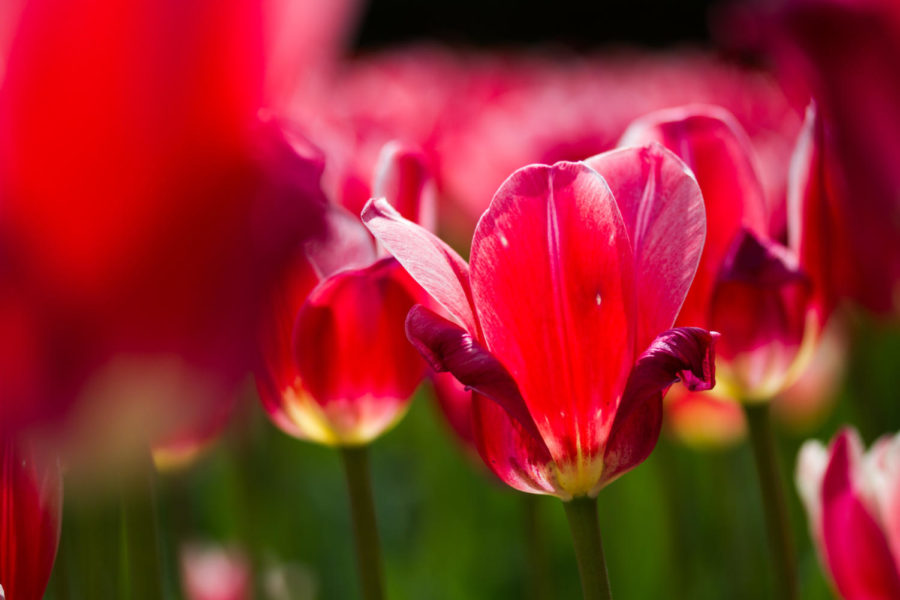Tips for beginning spring gardening
Tulips can be found all over Reiman Gardens, as part of it’s 2016 theme: color. The display entitled “Rainbow Connection” can be viewed April through May 9.
March 8, 2018
The snow is starting to melt, the robins are starting to return, and each passing day is becoming a bit longer. The start of spring is just around the corner and that means plants and flowers will soon be blooming.
Richard Jauron, an extension specialist in the department of horticulture, shares his tips for the upcoming spring season and what you can be doing now to prepare your gardens for springtime.
Vegetable Gardens:
For vegetable gardens, there is not too much to do yet, but if wanted, you can start sowing seeds indoors.
“Things like cabbage, broccoli and cauliflower, all those go outside early to mid-April,” Jauron said. “We typically want to start those indoors about four to five weeks before that; so right now for example.”
But for things that need to be be planted in more of the warm season, like tomatoes and peppers, Jauron says you should wait until after the last frost, which is usually around early May.
But once again, you can start those inside, typically five to six weeks, or early to mid-March, before then.
The main thing you can do now is buy seeds in preparation for the growing season and take a look at the physical state of your garden space.
“When the weather is nice, you might just want to go out there and clean up things, move out the debris,” Jauron said. “That’s probably going to be, depending on the weather, a couple weeks or so, it’s still kind of wet out.”
For vegetable gardens, a suitable location needs to include at least six hours of direct sunlight a day.
In addition to the direct sunlight, a good, well-drained soil is essential for the success of a vegetable garden.
For beginners, Jauron advises starting with a smaller vegetable garden.
“I would suggest they kind of start small, because they are going to run into problems,” Jauron said. “They are going to have issues that they don’t know how to deal with and so on a smaller scale it’s easier to deal with that.”
Flowering Gardens:
A flowering garden has more leeway for location. There are some that do well in the sun and some plants that do well in the shade.
When it comes to flowering plants, there are two major options, annuals and perennials.
Perennials come back year after year. They’re popular because all you do is plant it once and it will bloom every year if it has sufficient sunlight. However, they only bloom for about 2-3 weeks every summer.
But if you want more than that, Jauron says there are two options to consider.
One is to space out the timing of your perennials.
“You can obviously plant different perennials that bloom at different times,” Jauron said.
The second option is to plant a lot of annuals that bloom from spring until frost.
With annuals you have to replant them every year, but there are a wide variety of annuals available. There are some that thrive in the shade and others that thrive in the sun.
Overall, the biggest mistake Jauron sees is things being planted in the wrong place.
If a plant or flower isn’t getting enough of what it needs, whether that be sunlight or shade, it won’t bloom or produce at its fullest potential, Jauron said.







